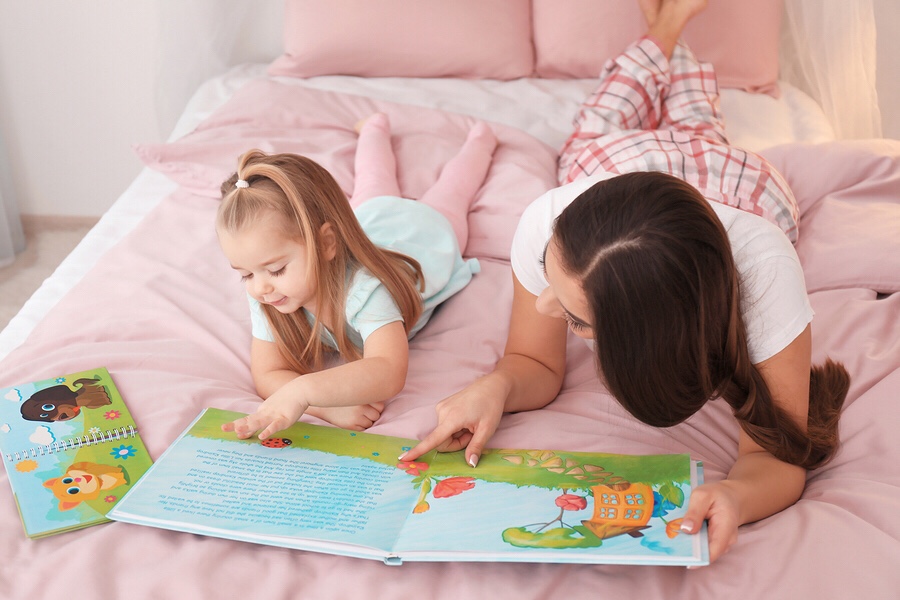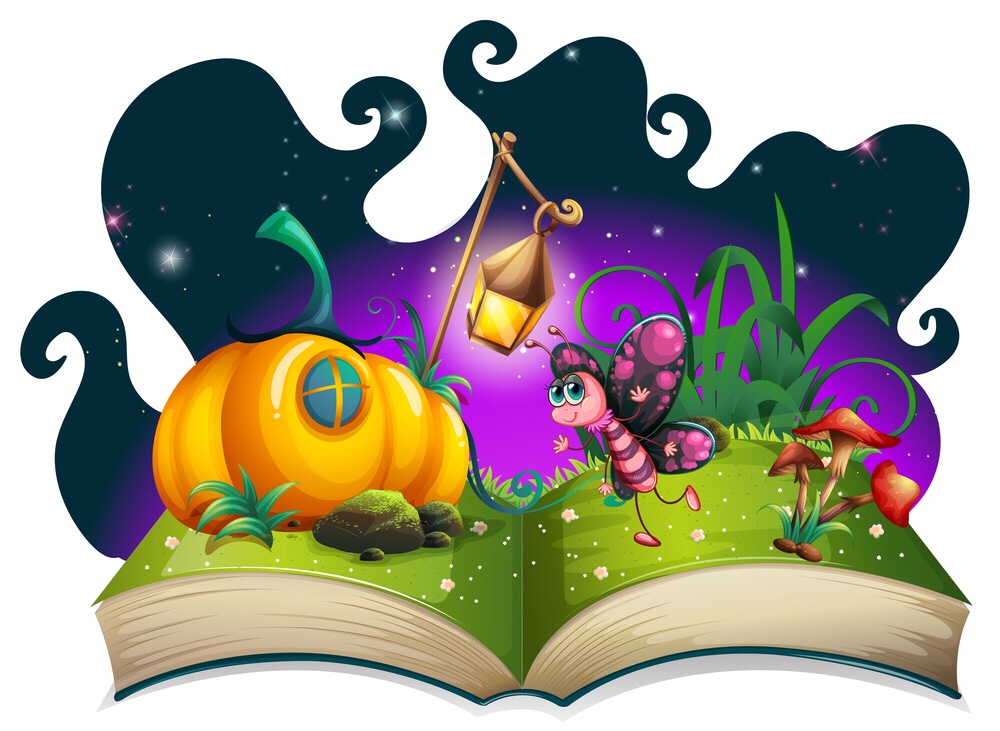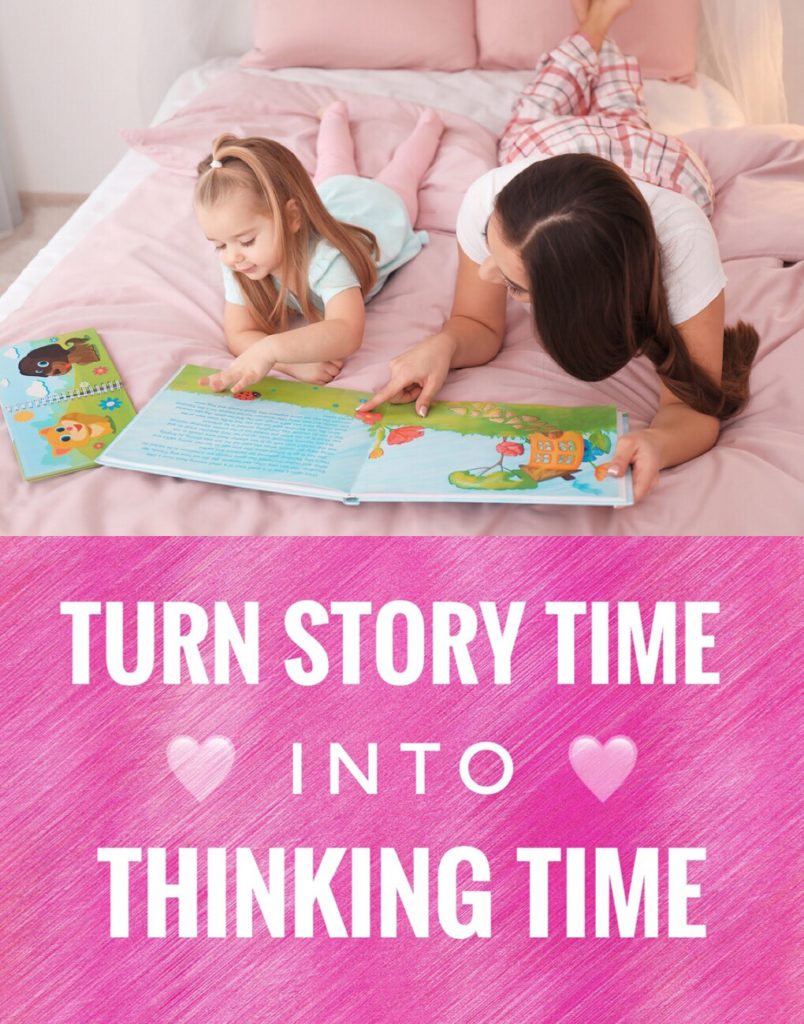
It is no secret that we love books and having special story times each day. I love to read to both of my children but I also understand that it is important for them to learn as we read. That is why I am super excited to have Tanja with Empowered Parents sharing her tips today for How to Turn Story Time into Thinking Time. Tanja is a former teacher who provides tools and resources for parents to get involved in their children’s learning journey. I have found her site so helpful as we prepare Graylie for the big jump to kindergarten next year!
How to Turn Story Time into Thinking Time
Story time is a favorite time of the day for most children. There is something special and magical about snuggling up with your little ones and reading them a story.
Your children are learning so much while you read. They are improving their vocabulary, knowledge, concentration, understanding of language, listening skills, imagination and so much more.
Did you know that you can use your daily story as a time to develop higher-order thinking skills in your young child?
All it takes is a little thought on your part. Instead of simply reading while your child passively listens, introduce different types of questions that will build different thinking skills.
Here are some examples:
Questions to Encourage Predictions
Read the beginning of the story and ask your child for possible endings, or discuss what could happen in the story just by looking at the front cover.
Page through the entire book without reading it and discuss what is happening based on clues in the pictures.
Questions that Teach Cause and Effect
It is important for children to understand the relationship between cause and effect – that certain actions will lead to certain events or consequences.
While reading, stop and ask questions such as:
- Why was the little girl angry?
- What do you think would happen if you did that to someone?
- What would have happened if she had done it a different way?
 Closed Questions
Closed Questions
Closed questions are questions that have an answer that can be found in the text. The answer is not up for interpretation. These questions will teach your child to listen for information.
Ask questions such as:
- What colour were his shoes?
- Who did the brother and sister go visit?
- Where did they find the treasure?
Open Questions
Open questions can be answered with some level of interpretation. The answer may be highly implied by the actions or words in the text, though not explicitly stated.
Here are some examples:
- Do you think the queen liked Snow White?
- How did Cinderella feel about not being allowed to go to the ball?
- How did Cinderella’s step-sisters treat her?
Questions that Encourage Opinions
These kinds of questions encourage children to form their own opinions about things. They are very broad and should be backed by personal reasons.
Ask questions such as:
- What would you do if you felt like that?
- Do you think what the snake did was right or wrong?
- Do you think Cinderella will be happy forever once she finds her prince?
Questions to Stimulate Creativity
Use these questions to stimulate your child’s imagination and creativity.
Some examples:
- Let’s make up a new ending to this story. What if Cinderella had not lost her shoe?
- Tonight, instead of reading a story, we are going to make up our own one. What would you like it to be about?
I hope you’ve enjoyed reading this post about simple ways to encourage your child to think. Let us know in the comments if you’ve tried some of these questions and brought some fun into story time!
 Tanja is a former preschool and early grades teacher. She started her blog Empowered Parents to help parents get involved in their children’s learning journey. She has a passion for talking about the benefits of play in early childhood. You can find her website at www.empoweredparents.co or her Pinterest profile at https://za.pinterest.com/theempoweredparents/
Tanja is a former preschool and early grades teacher. She started her blog Empowered Parents to help parents get involved in their children’s learning journey. She has a passion for talking about the benefits of play in early childhood. You can find her website at www.empoweredparents.co or her Pinterest profile at https://za.pinterest.com/theempoweredparents/
